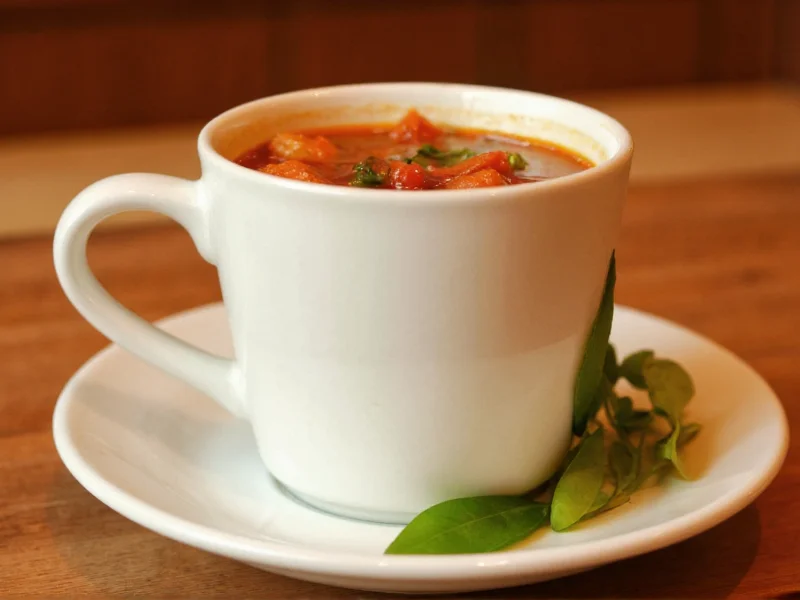When selecting tableware for soups and broths, understanding the specific design elements of soup mugs helps optimize your dining experience. These specialized vessels bridge the gap between traditional drinking mugs and shallow soup bowls, offering unique advantages for various soup types. The ideal soup mug balances capacity, shape, and material to enhance both functionality and enjoyment of your favorite warm meals.
Defining Characteristics of Soup Mugs
Soup mugs possess distinct features that differentiate them from standard beverage containers. Their design considerations address specific challenges associated with consuming liquid meals. Unlike coffee mugs optimized for hot beverages, soup mugs accommodate both liquid and solid components commonly found in soups, stews, and chowders.
| Feature | Soup Mug | Regular Mug | Soup Bowl |
|---|---|---|---|
| Capacity | 10-16 oz | 8-12 oz | 12-20 oz |
| Opening Diameter | 3-4 inches | 2.5-3 inches | 5-7 inches |
| Depth | 3.5-4.5 inches | 3-4 inches | 1.5-2.5 inches |
| Handle Design | Large, insulated | Standard | None or small |
| Primary Use | Soups with solids | Hot beverages | Broths, bisques |
Material Considerations for Optimal Soup Experience
The material composition significantly impacts your soup consumption experience. Ceramic remains the most popular choice for soup mugs due to its excellent heat retention properties and non-reactive nature with acidic ingredients. Stoneware variants offer enhanced durability while maintaining similar thermal characteristics.
Porcelain soup mugs provide a more refined presentation option, particularly suitable for elegant settings, though they generally retain heat less effectively than thicker ceramic options. For those concerned about thermal shock, double-walled soup mugs have gained popularity as they maintain soup temperature while keeping the exterior cool to the touch.
When evaluating soup mug material types, consider your typical soup consumption patterns. Chunky vegetable soups and chowders pair well with thicker ceramic mugs that retain heat throughout consumption, while delicate broths might be better served in thinner porcelain vessels that cool slightly faster to ideal drinking temperature.
Practical Usage Guidelines
Proper usage techniques maximize the benefits of your soup mug investment. Pre-warming your mug with hot water before adding soup helps maintain optimal serving temperature longer. This simple step prevents the initial temperature drop that occurs when hot liquid meets a room-temperature vessel.
The wider opening of soup mugs facilitates easier spoon access compared to standard mugs, making them particularly suitable for soups containing solid ingredients. When selecting soup mug size for specific recipes, consider that 12-ounce capacity generally accommodates most single-serving soup portions without risking overflow during consumption.
Care and maintenance practices directly impact longevity. Hand washing preserves the integrity of glazes and prevents thermal shock that can occur in dishwashers. For stubborn residue, soaking with warm, soapy water before gentle scrubbing proves more effective than aggressive cleaning methods that might damage the surface.
Common Misconceptions Addressed
Many consumers confuse soup mugs with oversized coffee mugs, but the design differences serve specific functional purposes. The wider rim isn't merely aesthetic—it accommodates spoon entry while reducing the risk of spills when consuming chunkier soups. The deeper profile prevents splashing during stirring, a common issue with standard mugs when used for soups.
Another prevalent misconception suggests that microwave-safe labeling guarantees suitability for soup preparation. While many ceramic soup mugs are microwave-safe, the presence of metallic accents or certain glazes may restrict microwave usage. Always verify manufacturer specifications before using your soup mug in microwave applications.
Seasonal and Contextual Considerations
Soup mug selection varies based on seasonal needs and consumption context. During colder months, thicker-walled mugs provide superior heat retention, while thinner options might be preferable in warmer seasons when slightly cooler soup temperatures are desired. For outdoor settings or travel, insulated soup mug options with secure lids address portability concerns while maintaining temperature control.
Understanding how soup mug design elements interact with your specific consumption habits helps optimize your selection. Whether enjoying a quick weekday lunch or hosting a dinner party, the right soup vessel enhances both practicality and enjoyment of your meal.
What's the ideal capacity for a soup mug?
The ideal capacity ranges from 10 to 16 ounces, providing sufficient space for most single-serving soups while maintaining comfortable handling. Twelve ounces represents the most versatile size, accommodating both broth-based soups and chunkier varieties without risking overflow during consumption.
Can I use a regular coffee mug for soup?
While possible for broth-based soups, regular coffee mugs present challenges with chunkier varieties due to their narrower openings and smaller capacity. The restricted access makes spoon usage difficult and increases spill risk when consuming soups containing solid ingredients like vegetables or meats.
Why do soup mugs have larger handles than regular mugs?
The larger handles accommodate the higher temperatures associated with soup consumption. They provide better insulation between your hand and the hot vessel while offering more secure grip during extended meal periods, which is particularly important when the mug contains both liquid and solid components requiring stirring.
How does soup mug material affect soup temperature?
Thicker ceramic materials retain heat longer than porcelain or thin stoneware. Double-walled construction creates an insulating air gap that maintains soup temperature while keeping the exterior cool to the touch. Material thickness directly correlates with how long your soup remains at optimal consumption temperature.
Are all ceramic soup mugs dishwasher safe?
Most ceramic soup mugs are dishwasher safe, but frequent machine washing can gradually degrade glazes and increase susceptibility to thermal shock. Hand washing preserves the mug's integrity longer, especially for pieces with decorative elements or specialty glazes. Always check manufacturer care instructions for specific recommendations.











 浙公网安备
33010002000092号
浙公网安备
33010002000092号 浙B2-20120091-4
浙B2-20120091-4